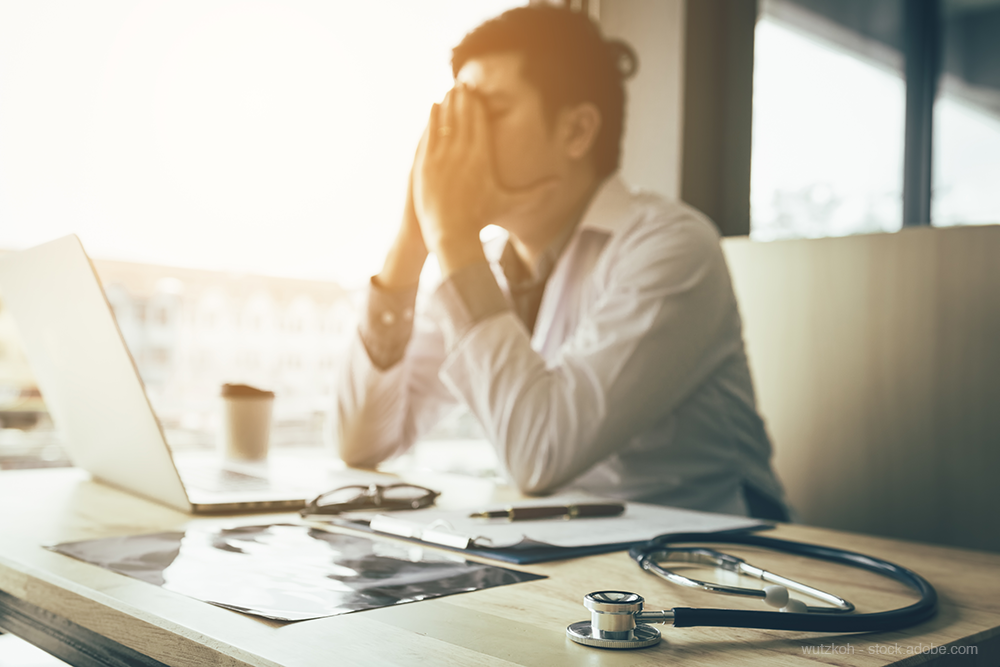4 Micro-Strategies to Avoid Post-COVID Burnout
Small daily techniques can help you avoid burnout as imaging volumes swell to process the backlog of scans.

Burnout is not a new concern for radiology, but radiologists could be at a higher risk for it this year, particularly as the industry begins to open back up to patients and elective imaging volume balloons above typical levels.
With the future playing field for the industry being somewhat unclear, providers must stay alert for the emergence of any new challenges and plan for how best to manage the accompanying stresses, said one industry expert.
“Burnout has been an issue for some time, but with COVID-19, all the uncertainty associated with the health risks, the economic impact, and the more recent developments in the United States with race relations, it’s like turning up the heat and intensifying things even more,” said David Fessell, M.D., professor of radiology at Michigan Medicine. “When there’s a lot uncertainty, that naturally creates anxiety, and people are now reporting greater incidents of anxiety and depression.”
To help you process and cast away much of the stress that can lead to burnout, Fessell outlined several micro-practices you can proactively implement.
Dialing Down the Stress
In typical conversations about stress management and avoiding burnout, you hear about coaching and mindfulness-based stress reduction. And, while these strategies are effective, they are also time consuming, Fessell explained, making them less attractive to providers who have busy schedules. But, a micro-practice only takes a few seconds or minutes.
“Coaching sessions can take hours and mindfulness courses can take weeks. Many physicians just don’t have the time, so they may not even sign up for those options,” he said. “Micro-practices are much more appealing because they’re really short and simple.”
Mindfulness moments: It does not take long, Fessell said, to do a quick check in with yourself. You are already sanitizing your hands between patients and at several other times during the day to avoid viral spread, so take those few seconds for some deep breaths and self-assessment. Are you hungry? Are you clenching your jaw? Is your neck cramped? You can also do these check-ins while waiting to log into your PACS, while brushing your teeth, or waiting at a stop light, he said.
“It doesn’t take long for these activities, and in those few seconds, you can develop and raise an awareness of yourself,” he said. “And, you can build on these moments over time.”
Name your emotion: Feeling an emotion strongly and not being able to identify it can create greater stress, contributing to burnout. Instead of just working through the feeling, take a few moments to focus on it and figure out exactly what it is.
“Coming up with a word that really seems to hit the bull’s eye on your emotions can do a great deal in helping you calm down,” Fessell explained.
In fact, he said, functional MRI studies have shown that being able to better identify your emotions can shift brain activity from the amygdala, the emotional center of the brain, to the pre-frontal cortex, the region responsible for higher-order thinking.
Gratitude practice: Pay attention to the positives that occur during your day. Either in a daily journal or in a text message to a friend or colleague, make a list of three things for which you are grateful. Whether it was a pleasant encounter with a patient or a good interaction with a colleague, make a note of it to help you concentrate on the less stressful parts of your day.
Diaphragmatic breathing: Slow, deep breathing has already been shown to help lower stress levels, he said. With diaphragmatic breathing, put your hand on your belly, take a breath, and concentrate on feeling it move downward through your body, being mindful to engage your diaphragm.
Not only does the slower breathing stimulate your parasympathetic system, slowing down your fight-or-flight reflexes, but it has also been shown to have a positive impact on your blood pressure and salivary cortisol levels, Fessell added.
The Importance of Mirco-Practices Now
Avoiding burnout is always important, but the impact of COVID-19 has made implementing strategies to fight against it even more critical, Fessell said. The industry is entering a phase where no one can confidently predict exactly what the playing field will look like or what challenges might lie ahead. Staying focused and maintaining a positive energy will be vital.
“Volumes are ticking up now in radiology, and practices are going to be picking up the pace to make up for the backlog of imaging studies,” he said. “Practices will also be screening people so they can get seen. The intensity is going to be moving upward in radiology for a lot of reasons.”
Even though you’re likely facing a period of time with longer hours and heavier caseloads, building reminders to help you integrate these micro-practices into your day can ultimately have a positive impact on your practice capabilities. Choose the strategy that resonates best with you, and start there. Once you have it successfully woven into your day, try adding in a second or third micro-practice to maximize the benefits.
“You have to keep an eye on the potential for burnout because overtime it can make you less productive,” Fessell said. “We’re not machines. We’re not made to go 24-7-365. We need downtime to recover from these cycles of intensity.”
New Collaboration Offers Promise of Automating Prior Authorizations in Radiology with AI
March 26th 2025In addition to a variety of tools to promote radiology workflow efficiencies, the integration of the Gravity AI tools into the PowerServer RIS platform may reduce time-consuming prior authorizations to minutes for completion.
The Reading Room: Artificial Intelligence: What RSNA 2020 Offered, and What 2021 Could Bring
December 5th 2020Nina Kottler, M.D., chief medical officer of AI at Radiology Partners, discusses, during RSNA 2020, what new developments the annual meeting provided about these technologies, sessions to access, and what to expect in the coming year.